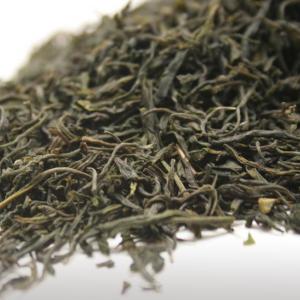
GREEN TEA (CAMELLIA SINENSIS) - PLANTS

BASE / GENERAL DATA
Information submited: March 24, 2016 Modified: May 15, 2018 By: OperaDreamhouse
Tea tree is known by men for more than 5000 years, it is part of many legends. Tea is said to be the oldest drink in the world. It is also the second most consumed drink just behind water.
Tea consumption has its legendary origins in China dating back to more than 4,000 years ago, making it the oldest plant - based tea known. The Kissa Yojoki (Book of Tea), written by Zen priest Eisai in 1191, describes how drinking Green tea may affect five vital organs, the shapes of Tea plants, flowers and leaves, and how to grow and process Tea leaves.
Camellia Sinensis is a species of evergreen shrub or small tree whose leaves and leaf buds are used to produce tea. It is of the genus Camellia of flowering plants in the family Theaceae. White tea, Yellow tea, Green tea, Oolong, Pu-erh tea and Black tea are all harvested from one or the other, but are processed differently to attain varying levels of oxidation.
Tea plants prefer a rich and moist growing location in full to part sun. Camellia Sinensis is an evergreen shrub or small tree that is usually trimmed to below 2 m when cultivated for its leaves. It has a strong taproot. The flowers are yellow-white, 2,5 - 4 cm in diameter, with 7 to 8 petals. The leaves are 4 - 15 cm long and 2 - 5 cm broad. Fresh leaves contain about 4% caffeine, as well as related compounds including theobromine.
The Green Tea plants are grown in rows that are pruned to produce shoots in a regular manner, and in general are harvested three times per year. The first flush takes place in late April to early May. The second harvest usually takes place from June through July, and the third picking takes place in late July to early August. Sometimes, there will also be a fourth harvest. It is the first flush in the spring that brings the best - quality leaves.
Different leaf ages produce differing Tea qualities, since their chemical compositions are different. Usually, the tip (bud) and the first two to three leaves are harvested for processing. This hand picking is repeated every one to two weeks.
Green Tea originated in China, but its production has spread to many countries in Asia.
Green Tea is prepared by exposing the gathered leaves to the air until superfluous moisture is eliminated, when they are roasted over a brisk wood fire and continually stirred until they become moist and flaccid.
Tea consumption has its legendary origins in China dating back to more than 4,000 years ago, making it the oldest plant - based tea known. The Kissa Yojoki (Book of Tea), written by Zen priest Eisai in 1191, describes how drinking Green tea may affect five vital organs, the shapes of Tea plants, flowers and leaves, and how to grow and process Tea leaves.
Camellia Sinensis is a species of evergreen shrub or small tree whose leaves and leaf buds are used to produce tea. It is of the genus Camellia of flowering plants in the family Theaceae. White tea, Yellow tea, Green tea, Oolong, Pu-erh tea and Black tea are all harvested from one or the other, but are processed differently to attain varying levels of oxidation.
Tea plants prefer a rich and moist growing location in full to part sun. Camellia Sinensis is an evergreen shrub or small tree that is usually trimmed to below 2 m when cultivated for its leaves. It has a strong taproot. The flowers are yellow-white, 2,5 - 4 cm in diameter, with 7 to 8 petals. The leaves are 4 - 15 cm long and 2 - 5 cm broad. Fresh leaves contain about 4% caffeine, as well as related compounds including theobromine.
The Green Tea plants are grown in rows that are pruned to produce shoots in a regular manner, and in general are harvested three times per year. The first flush takes place in late April to early May. The second harvest usually takes place from June through July, and the third picking takes place in late July to early August. Sometimes, there will also be a fourth harvest. It is the first flush in the spring that brings the best - quality leaves.
Different leaf ages produce differing Tea qualities, since their chemical compositions are different. Usually, the tip (bud) and the first two to three leaves are harvested for processing. This hand picking is repeated every one to two weeks.
Green Tea originated in China, but its production has spread to many countries in Asia.
Green Tea is prepared by exposing the gathered leaves to the air until superfluous moisture is eliminated, when they are roasted over a brisk wood fire and continually stirred until they become moist and flaccid.
After this they pass to the rolling table, and are rolled into balls and subjected to pressure which twists them and gets rid of the moisture. They are then shaken out on flat trays, again roasted over a slow and steady charcoal fire, and kept in rapid motion for an hour to an hour and a half, till they assume a dullish green colour. After this they are winnowed, screened, and graded into different varieties.
Chinese Green Teas are traditionally pan - fired, unlike the Japanese steaming process. Other processes in China include oven - dried and sun - dried. Due to the different production process, Chinese Teas are said to have a more "Earthy" taste than Japanese Teas. Zhejiang Province is home to the most famous of all teas.
Green Tea is ubiquitous in Japan and is commonly known simply as "Tea". Tea was first used in China, and in 1191, was brought to Japan by Myoan Eisai, a Japanese Buddhist priest who also introduced the Rinzai school of Zen Buddhism.
Chinese Green Teas are traditionally pan - fired, unlike the Japanese steaming process. Other processes in China include oven - dried and sun - dried. Due to the different production process, Chinese Teas are said to have a more "Earthy" taste than Japanese Teas. Zhejiang Province is home to the most famous of all teas.
Green Tea is ubiquitous in Japan and is commonly known simply as "Tea". Tea was first used in China, and in 1191, was brought to Japan by Myoan Eisai, a Japanese Buddhist priest who also introduced the Rinzai school of Zen Buddhism.
Teas from Japan may be referred to as "Japanese Tea". Unlike Chinese Green Teas which are pan - fired, Japanese Green Teas are steamed giving them a more "vegetative" or "leafy" taste.
The best Japanese Green Tea is said to be from the Yame region of Fukuoka Prefecture and from the Uji region of Kyoto.

SPIRITUAL PRACTISES DATA

MEDICINE / HEALTH DATA

BEAUTY / COSMETICS DATA

FOOD / COOKING DATA
COMMENTS
No comments.
Newest mixtures containing Green Tea (Camellia Sinensis):

Face and body gentle oil cleanser
May 26, 2016

Regenerating - moisturizing evening facial mask
March 11, 2016




